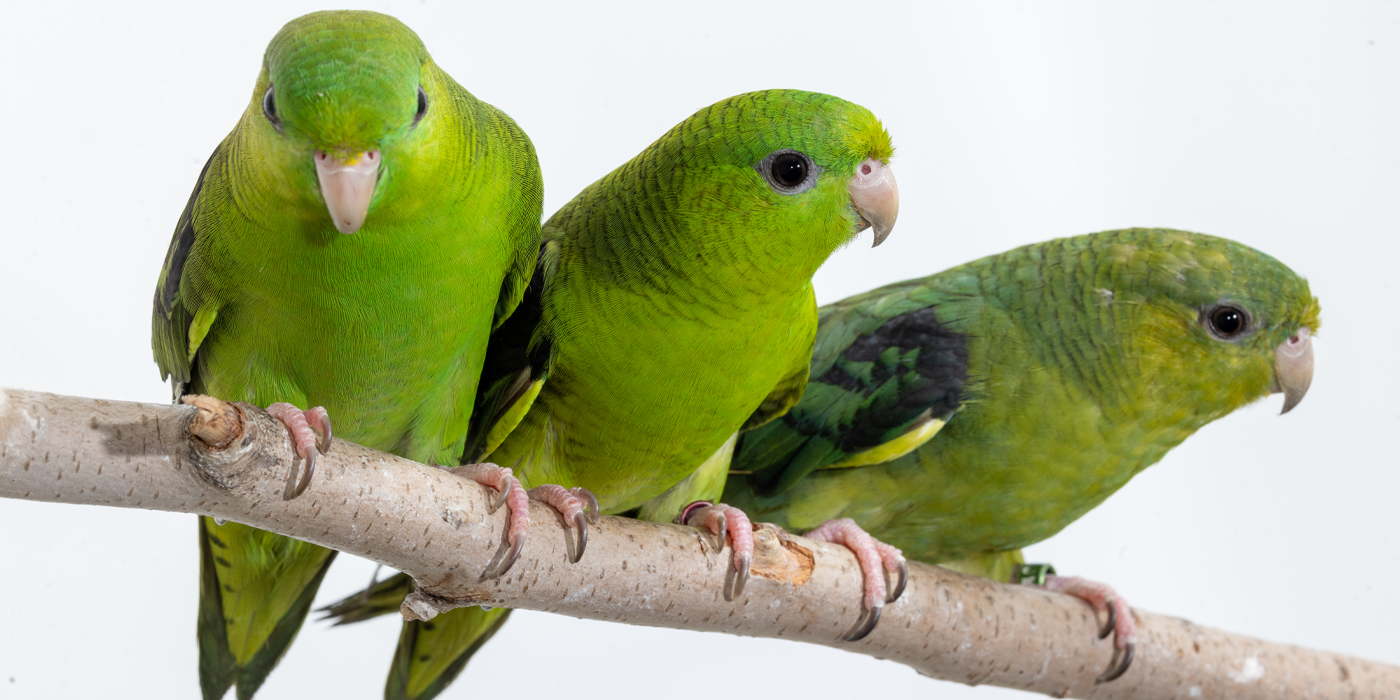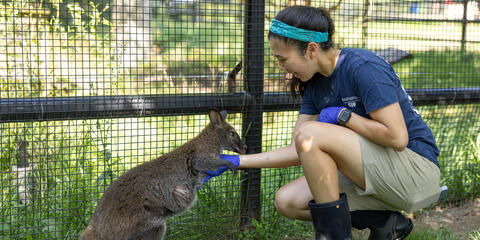Native to the Americas, the barred parakeet (also known as the lineolated parakeet) is a small, green member of the parrot family. It lives year-round in the humid tropical highland forests near the equator. Their small, green bodies make them quite difficult to spot in their native forested habitat, so they are more often heard flying overhead rather than seen.
Physical Description
A relatively small parrot, barred parakeets are best identified by their green plumage, pointed tails, and thick, pinkish-brown bills. Black or dark green bars, or stripes, cover parts of their bodies. Barred parrots in captivity have been bred to have many different color variations and patterns.
Size
Adults are 6.2 inches (16 centimeters) long, and weigh between 1.5-1.8 ounces (42-52 grams).
Native Habitat
Barred parakeets are most often found in high elevation tropical cloud forests, especially in areas with lots of bamboo.
Lifespan
Barred parakeets live about 10 years in the wild and up to 15 years in human care.
Communication
Barred parakeets have several different vocalizations that they use to communicate, including a high-pitched chattering noise and a shrill, short "chirr-it" call. In human care, they can mimic noises like other parakeets.
Food/Eating Habits
Mainly seeds, with some plant material, insect larva and fruits. They will occasionally forage in farm fields in search of maize and leftover crop seeds.
Social Structure
In the wild, these birds travel with several individuals as they fly above the treetops and will occasionally join groups of a hundred or more parakeets.
Reproduction and Development
Little is known about the breeding behavior of barred parakeets in the wild. They lay between two and four eggs at a time, which hatch after about three weeks of incubation. Young leave the nest after about five weeks of parental care.
Help this Species
- Be a smart consumer. Choose products made with sustainable ingredients, such as Smithsonian certified Bird Friendly coffees, which support farmers striving to limit their impact on wildlife and habitat.
- Practice ecotourism by being an advocate for the environment when you’re on vacation. During your travels, support, visit or volunteer with organizations that protect wildlife. Shop smart too! Avoid buying products made from animals, which could support poaching and the illegal wildlife trade.
- Choose your pets wisely, and do your research before bringing an animal home. Exotic animals don’t always make great pets. Many require special care and live for a long time. Tropical reptiles and small mammals are often traded internationally and may be victims of the illegal pet trade. Never release animals that have been kept as pets into the wild.
- Be a responsible cat owner, and keep cats indoors or under restraint when outside. Never release animals that have been kept as pets into the wild.
- Conservation starts with you! Join a citizen science project, such as FrogWatch or Neighborhood Nestwatch, where you can help collect valuable data for scientists. Encourage your friends and family to get involved too.




